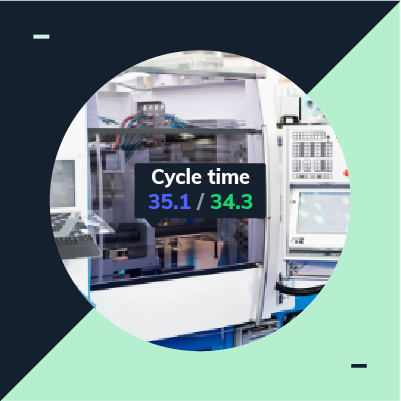Cycle time in Production Capture

How does such a tiny variable have such a big impact?
In the plastic injection molding process, measuring the total time it takes from start to finish to make a part is not an easy task because you can have an approximate time, but this can vary by multiple factors, for example: filling time, compaction time, cooling time and open mold time, these four phases can show a significant difference in the total sum of time and represent an unstable production rate.
That is to say, to calculate the cycle time you should start counting from the time the resin is unloaded and the mold is filled until the plastic is cooled by some method to eject the molded parts and the mold is closed again, without forgetting those "micro-stops" in which the operator stopped the machine to make some revision.
It is important to highlight that to be more specific even the mold design, the configuration of available cavities, the time and design of the cooling lines, the type of material can be determining factors for the composition and measurement of the cycle time; but, sometimes all this is "overlooked" and even the operator or his work routine can alter the actual cycle time achieved.
An excellent way to measure the actual cycle time is to sum the production and divide the total elapsed time by the number of cycles performed. In this way, this measure includes the cycle time programmed into the machine as well as any micro-stops made during the process. If this measurement is calculated in real time, you will have full control over the injection molding operation.
When you register a part in the SCHEMA catalog, you can determine the ideal cycle time that you know and it will be identified in the production capture as the programmed cycle time (it appears in green color), but when the operator decides to stop the machine for a revision, when the mold is not in good condition or for some reason the machine is in a faster speed than indicated, you will get the real cycle time that you can see represented in blue-purple color in an expression of: Actual cycle time / Programmed cycle time: Actual Cycle Time / Programmed Cycle Time.
In this way, when you make your records you can know your actual production cycle time and even identify if your performance is greater than one hundred percent (100%) to achieve a better analysis of the production rate and manage the work from real data and if your machines have integrated some monitoring sensors or an IoT device ... phew, you can plan, operate and manage your production floor in an efficient and effective way.
